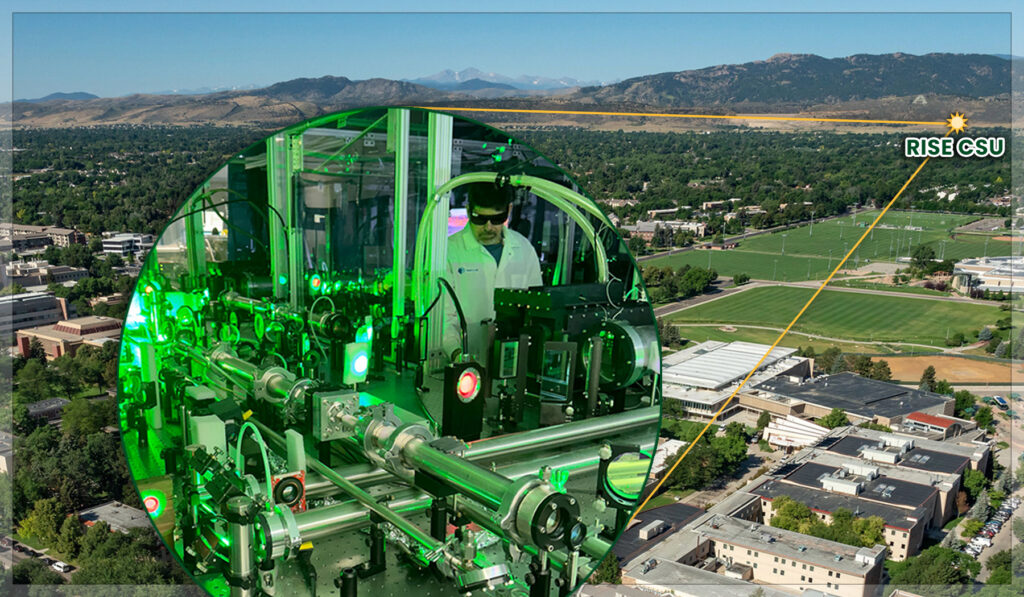
The U.S. Department of Energy announced today it will fund a newly established Inertial Fusion Science and Technology hub, known as RISE. Headquartered at Colorado State University, the new hub will focus on advancing inertial fusion energy, or IFE, a power source that could one day dramatically reduce the carbon footprint of how energy is supplied globally.
RISE will receive $16 million in funding over the next four years.
Colorado State University and the DOE’s SLAC National Accelerator Laboratory, operated by Stanford University, will lead the new hub. They are working in partnership with experts from University of Illinois, Cornell University, Texas A&M, Los Alamos National Laboratory, Naval Research Laboratory, and three companies: Marvel Fusion, Xcimer Energy, and General Atomics.
Fusion, the process that powers the sun, could be the key to enabling a safe, clean, and reliable energy source. Inertial fusion energy is a promising approach to fusion energy that uses powerful lasers to heat a small target containing fusible material.
Lasers are fundamental tools in IFE research. Last winter, for the first time in history, scientists at the National Ignition Facility at Lawrence Livermore National Laboratory generated fusion gain, meaning more energy came out of a fusion reaction than laser energy that went in. RISE researchers aim to build on the momentum of that breakthrough to help make commercial fusion a success.
Carmen Menoni, University Distinguished Professor of Electrical and Computer Engineering, serves as director of the new hub. Her team will use laser technologies to harness the potential of fusion for abundant clean energy.
Experiments at CSU will leverage the power of its ALEPH laser, a high repetition rate, petawatt-class (one petawatt: million billion watts) laser system to be upgraded to two petawatts. ALEPH was built in-house under the leadership of University Distinguished Professor Jorge Rocca, in partnership with university experts in ultra-intense laser interaction with ordered nanostructures leading to fusion.
“We envision the hub to become a center of excellence for IFE science and technology and a magnet to attract talent and develop workforce to support DOE’s mission in IFE,” said Menoni. “We are thrilled to partner with a world-class team of experts who are committed to making IFE a commercial reality.”
About the RISE hub
The RISE hub is funded by the DOE’s Office of Science, Fusion Energy Science through the DOE’s Inertial Fusion Energy Science and Technology Accelerator Research (IFE-STAR). The RISE hub will combine innovative target concepts with new developments in excimer gas lasers and solid-state laser drivers to open up novel IFE regimes. The hub will also prioritize the involvement of students and workforce development, and university-industry-national laboratory collaborations.
The creation of the RISE hub comes on the heels of the recently announced public-private partnership with Marvel Fusion to build a $150 million new laser facility at CSU. Marvel Fusion is one of the partners involved in RISE.